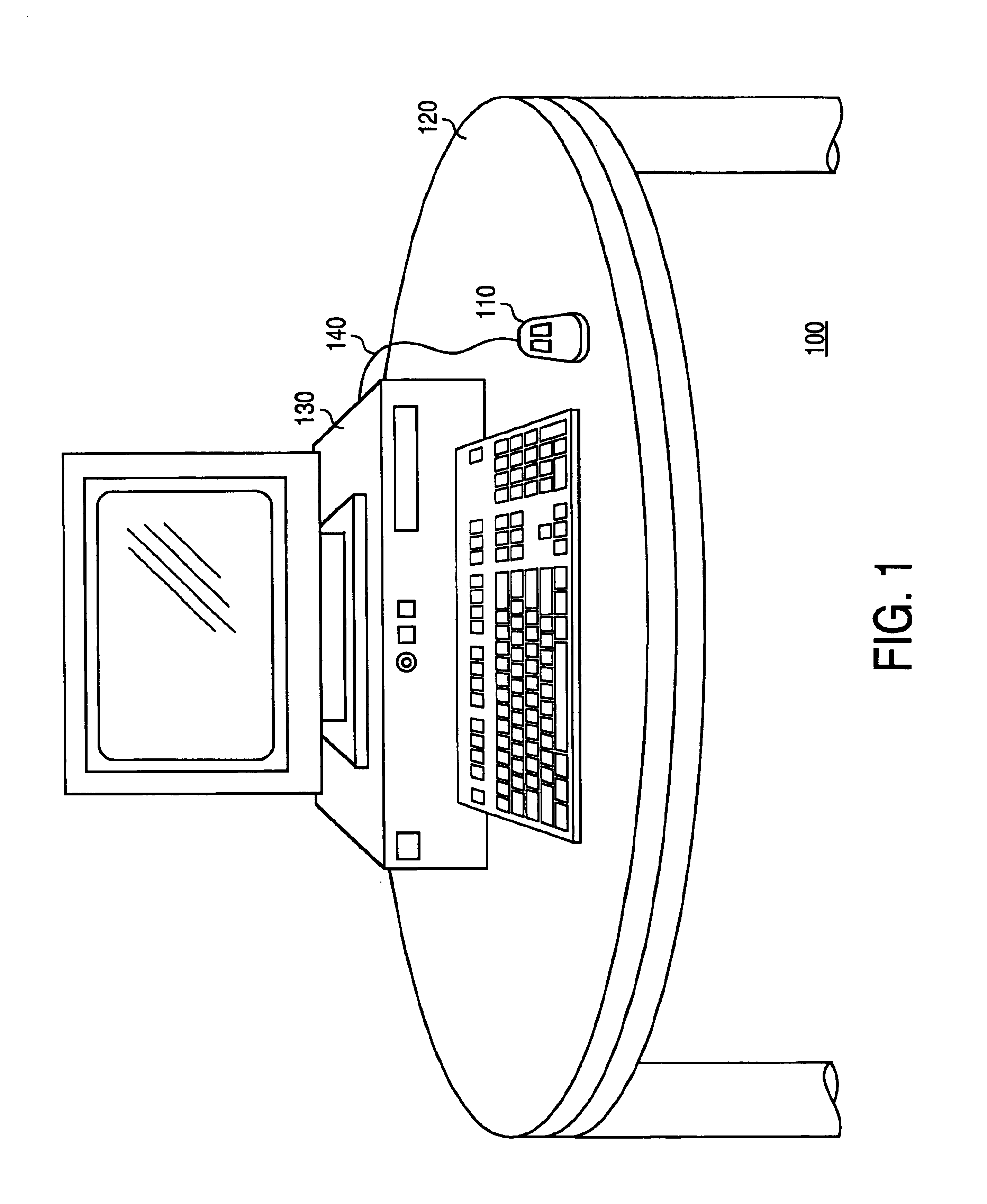Optical detection system, device, and method utilizing optical matching
a detection system and optical matching technology, applied in the field of pointing devices, can solve the problems of inability to accurately manipulate the cursor, inability to accurately detect the position of the cursor, and many other problems, and achieve the effects of reducing the processing power necessary, reducing the effect of lateral motion from the other direction, and producing little change in the image data signal
- Summary
- Abstract
- Description
- Claims
- Application Information
AI Technical Summary
Benefits of technology
Problems solved by technology
Method used
Image
Examples
Embodiment Construction
[0047]FIG. 1 is a diagram of an embodiment of an operating environment 100 in accordance with the present invention. The operating environment 100 includes an optical pointing device 110, a surface 120, and a computer system 130. The surface 120 may be any surface that can diffusely reflect light, such as a table or desk, for example. The computer system 130 may be a conventional computer system such as an IBM PCT™, Apple MacIntosh™. Sun SPARCStation™, or the like. The computer system 130 includes a processor, a memory, a display screen, and an input port for a pointing device. The optical pointing device 110 is coupled to the input port of the computer system 130. It is noted that although the optical pointing device 110 may be coupled to the input port of the computer system 130 using a wire connection such as an optical pointing device cable 140, other coupling connections such as infrared or radio frequency control may also be applicable.
[0048]FIG. 2a is an external diagram of t...
PUM
 Login to View More
Login to View More Abstract
Description
Claims
Application Information
 Login to View More
Login to View More - R&D
- Intellectual Property
- Life Sciences
- Materials
- Tech Scout
- Unparalleled Data Quality
- Higher Quality Content
- 60% Fewer Hallucinations
Browse by: Latest US Patents, China's latest patents, Technical Efficacy Thesaurus, Application Domain, Technology Topic, Popular Technical Reports.
© 2025 PatSnap. All rights reserved.Legal|Privacy policy|Modern Slavery Act Transparency Statement|Sitemap|About US| Contact US: help@patsnap.com



